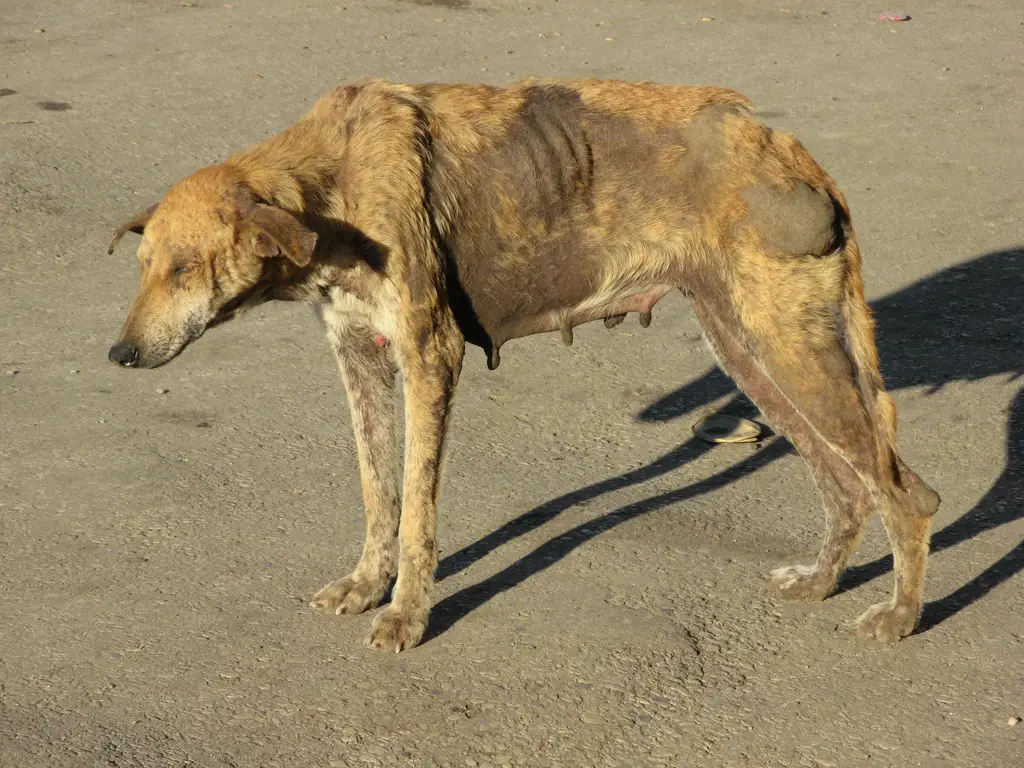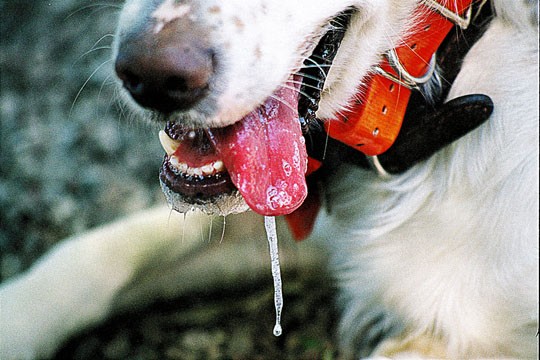WAKE UP! Lets Prevent RABIES Together.
Rabies is an acute viral encephalomyelitis caused by the rabies virus, a rhapdo virus, of the genus lyssavirus.
MODE OF TRANSMISSION
Typically, people contract rabies when they are bitten by a domestic mammal or pet that has acquired rabies from a rabid wild mammal. Vaccinating dogs and cats prevents them from acquiring the disease from other wildlife, and thereby transmitting the disease to humans. It is also possible, but quite rare, to get rabies if infectious material from a rabid mammal, such as saliva, has contact with a person’s eyes, nose, mouth or wound.
The virus may also be introduced into a scratch or in fresh breaks in the skin. Airborne spread in a cave with millions of bats have occurred, although rarely. Organ transplant (corneal) taken from person dying of diagnosed central nervous system disease have resulted in rabies in the recipients.
INCUBATION PERIOD
The usual incubation period is 2-8 weeks. It can be as long as a year or several years depending on the severity of the wounds, site of the wound as distance from the brain, amount of virus introduced and protection provided by clothing.
PERIOD OF COMMUNICABILITY
In dogs and cats, for 3 to 10 days before onset of clinical signs (rarely over 3 days) and throughout the duration of the disease.
SUSCEPTIBILITY AND RESISTANCE
All warm-blooded mammals are susceptible. Natural immunity in man is unknown.
CLINICAL MANIFESTATION IN MAN
The first symptoms of rabies may be very similar to those of the flu including general weakness or discomfort, fever, or headache. These symptoms may last for days.
There may be also discomfort or a prickling or itching sensation at the site of bite, progressing within days to symptoms of cerebral dysfunction, anxiety, confusion, agitation. As the disease progresses, the person may experience delirium, abnormal behavior, hallucinations, and insomnia. Spasm of muscle or deglutition on attempts to swallow (hydrophobic) is also included.
The acute period of disease typically ends after 2 to 10 days. Once clinical signs of rabies appear, the disease is nearly always fatal, and treatment is typically supportive.
Disease prevention includes administration of both passive antibody, through an injection of human immune globulin and a round of injections with rabies vaccine.
Once a person begins to exhibit signs of the disease, survival is rare. To date less than 10 documented cases of human survival from clinical rabies have been reported and only two have not had a history of pre- or postexposure prophylaxis. Death is often due to respiratory disorder.
SIGNS AND SYMPTOMS OF A RABID ANIMAL
The first sign usually is a change in behavior. Pet owners should be aware that behavioral changes can occur as a result of many conditions, from digestive disorders to poisoning.
Rabid animals usually stop eating and drinking, and may appear to want to be left alone. After the initial onset of symptoms, the animal may become vicious or begin to show signs of paralysis. Some rabid animals bite at the slightest provocation and others may be somnolent and difficult to arouse. Once the animal shows signs of paralysis, the disease progresses very quickly and the animal dies.
1. Prodromal Phase: First Symptoms of Rabies
· Change in tone of the dog's bark
· Chewing at the bite site
· Fever
· Loss of appetite
· Subtle changes in behaviour
2. Furious Phase: "Mad Dog Syndrome"
The second phase of infection usually lasts 2 to 4 days and not all rabid animals experience it. Animals that enter immediately into the final paralytic phase are sometimes said to have dumb or paralytic rabies.
Animals that spend most of their diseased state in the furious phase are sometimes said to have furious rabies. An infected dog may viciously attack any moving object, person, or animal; a caged rabid dog will chew the wire, break their teeth, and try to bite a hand moving in front of the cage. Rabid cats will attack suddenly, biting and scratching. Foxes will invade yards and attack dogs, cows, and porcupines.
They may show the following signs:
· Constant growling and barking
· Dilated pupils
· Disorientation
· Erratic behavior
· Episodes of aggression
· Facial expression showing anxiety and hyperalertness
· Irritability
· No fear of natural enemies (e.g., wild animals may not be afraid of people)
· Restlessness
· Roaming
· Seizures
· Trembling and muscle incoordination
· Paralytic Phase
3. The third and final phase of infection usually lasts for 2 to 4 days.
· Appearance of choking
· Dropping of the lower jaw (in dogs)
· Inability to swallow, leading to drooling and foaming of saliva
(i.e., "foaming at the mouth")
· Paralysis of jaw, throat, and chewing muscles
Paralysis then spreads to other parts of the body, the animal becomes depressed, rapidly enters a coma and dies.
TREATMENT
There is no specific treatment for rabies infection. Though a small number of people have survived rabies, the disease is usually fatal. For that reason, anyone thought to have been exposed to rabies receives a series of shots to prevent the infection from taking hold.
If you've been bitten by an animal that is known to have rabies, you'll receive a series of shots to prevent the rabies virus from infecting you. If the animal that bit you can't be found, it may be safest to assume that the animal has rabies. But this will depend on several factors, such as the type of animal and the situation in which the bite occurred.
Rabies shots include:
1. A fast-acting shot (rabies immune globulin) to prevent the virus from infecting you. Part of this injection is given near the area where the animal bit you if possible, as soon as possible after the bite.
2. A series of rabies vaccines to help your body learn to identify and fight the rabies virus. Rabies vaccines are given as injections in your arm. You receive five injections over 14 days.
What should I do if I think I’ve been exposed to rabies?
1. Wash the wound thoroughly with soap and water and seek immediate medical attention. A health care provider will care for the wound and assess the risk for rabies exposure.
2. Report the bite to your local health district.
Note: Any time a person is bitten or scratched by a domestic or wild mammal, the incident must be reported to the local health district, even if the mammal is a family pet and has up-to-date rabies shots.
PREVENTION
*Parenteral rabies vaccination of owned dogs.
*Sterilization of pet dogs.
*Unwanted dogs should not be abandoned.
2. Animal birth control - attempts should be made to sterilize the stray dog population or other methods of birth control should be investigated.
3. Suitable infrastructure for garbage disposal - to prevent the accumulation of waste in and around residential areas. This attracts stray and ownerless dog packs to these areas.
4. Vaccination - Sufficient and affordable cell culture vaccine should be available for post exposure treatment.
5. Mass oral vaccination of the stray dog population.
MISCONCEPTIONS ABOUT RABIES
Myth: A dog doesn’t have rabies if he acts friendly.
Fact: An infected dog can have any number of mood changes due to the rabies virus. A normally aggressive dog could suddenly act friendly, and the reverse is true. Also, an animal can transmit the disease before showing any clinical signs.
Myth: A rabid dog or animal with rabies shows fear of water.
Fact: People infected with rabies get painful spasms when trying to drink, which leads to ‘hydrophobia’ (fear of water). Animals don’t have these spasms, and may drink all they want.
Myth: A rabid animal froths at the mouth.
Fact: Not always. Only the animals with the paralytic rabies will salivate continually due to jaw muscles being paralyzed. Paralytic rabies is present in about 20% of rabies cases. The other 80% won’t have this symptom.
Myth: A rabid animal will be vicious and snap at everything.
Fact: Only the animal with the ‘furious’ type of rabies is likely to act this way.
Myth: Skunks are the number one rabies carrier.
Fact: In the United States, according to the ASRR, raccoons have the largest number of rabies cases in a species. Due to militant vaccination practices with dogs, rabies has become predominantly a wildlife problem. However, world-wide, unvaccinated dogs are the number one transmitters of the disease.
REFERENCES OR SOURCE OF INFORMATION
Public Health Nursing in the Philippines (Depeartment of Health)
Rabies basics. Centers for Disease Control and Prevention.http://www.cdc.gov/rabies/exposure/index.html. Accessed Nov. 23, 2010.
Rupprecht CE. Clinical manifestations, diagnosis, and treatment of rabies. http://www.uptodate.com/home/index.html. Accessed Nov. 23, 2010.
Fort GG, et al. Rabies. In: Ferri FF. Ferri's Clinical Advisor 2011: Instant Diagnosis and Treatment. Philadelphia, Pa.: Mosby Elsevier; 2011. http://www.mdconsult.com/books/page.do?sid=1095900802&eid=4-u1.0-B978-0-323-05610-6..00027-5--sc0010&isbn=978-0-323-05610-6&type=bookPage§ionEid=4-u1.0-B978-0-323-05610-6..00027-5--sc0010&uniqId=230129353-3. Accessed Nov. 23, 2010.
Bassin SL, et al. Rhabdoviruses. In: Mandell GL, et al. Mandell, Douglas, and Bennett's Principles and Practice of Infectious Diseases. 76th ed. Philadelphia, Pa.: Churchill Livingstone Elsevier; 2009. http://www.mdconsult.com/books/page.do?eid=4-u1.0-B978-0-443-06839-3..00163-6&isbn=978-0-443-06839-3&type=bookPage§ionEid=4-u1.0-B978-0-443-06839-3..00163-6&uniqId=227823193-5#4-u1.0-B978-0-443-06839-3..00163-6. Accessed Nov. 23, 2010.
Harper MB. Infection following bites. In: Long SS, et al., eds. Long: Principles and Practice of Pediatric Infectious Diseases. 3rd ed. Philadelphia, Pa.: Churchill Livingstone Elsevier; 2008. http://www.mdconsult.com/das/book/body/227823193-4/1087364479/1679/96.html#4-u1.0-B978-0-443-06687-0..50095-3--cesec28_1889. Accessed Nov. 23, 2010.
DeMaria A, et al. Rabies immune globulin and vaccine. http://www.uptodate.com/home/index.html. Accessed Nov. 23, 2010.
Jackson AC. Rabies. Neurologic Clinics. 2008;26:717.
Steckelberg JM (expert opinion). Mayo Clinic, Rochester, Minn. Dec. 7, 2010.






